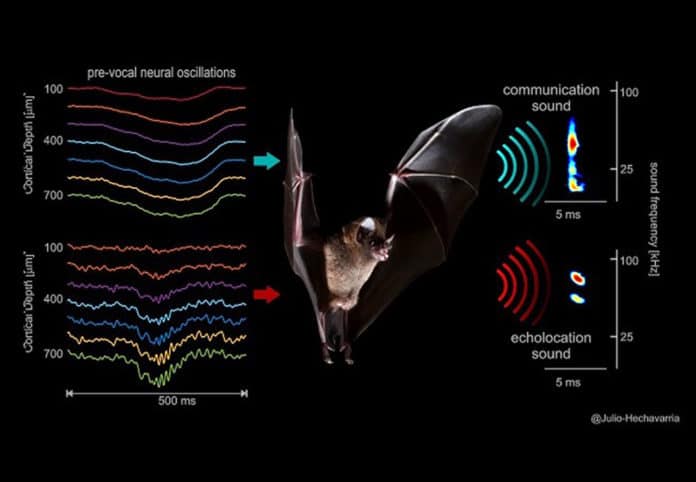Bats are known for having an empathetic hearing for orientation, emitting ultrasound noises, and receiving an image of their surroundings based on the echo.
Let’s consider Seba’s short-tailed bat (Carollia perspicillata) as an example, who finds the fruits using this echolocation system.
Likewise, bats use their voices in a somewhat deeper frequency range to communicate with other members of their species. They employ a vocal range for this purpose that is otherwise only found among songbirds and humans. Like humans, they produce sound through the larynx.
The ability to vocalize is ubiquitous in vertebrates, but neural networks underlying vocal control remain poorly understood.
Along with colleagues, neuroscientist Julio C. Hechavarria from the Institute for Cell Biology and Neuroscience at Goethe University tracked brain activity preceding vocalization in Seba’s short-tailed bats.
They found that -a cluster of nerve cells creates a circuitry from the frontal lobe to the corpus striatum in the interior of the brain. When this neural circuit triggers rhythmic signals, the bat emits a vocalization about half a second later. The kind of rhythm appeared to determine if the bats were going to utter echolocation or communication vocalizations.
However, it is challenging to predict within half a second. Hence, scientists decided to train a computer to test their hypothesis: The computer analyzed the recorded sounds and the neural rhythm separately and attempted to make prognoses using the various rhythms.
The outcomes suggest that echolocation versus communication vocalizations, the computer was correct about 80 percent of the time. Predictions were particularly accurate when considering signals from the frontal lobe, an area that in humans has been linked to action planning, among other functions.
Scientists argue that the rhythms they observed in bats’ brains are similar to those of neural rhythms often recorded from the human scalp. They also concluded that brain rhythms could be linked to sound production in mammals in general.
Julio Hechavarria: “For over 50 years, bats have served as an animal model for studying how the brain processes auditory stimuli and how human language develops. For the first time, we were able to show how distant brain regions in bats communicate with each other during vocalization. At the same time, we know that the corresponding brain networks are impaired in individuals who, for example, stutter as a result of Parkinson’s disease or emit involuntary noises due to Tourette syndrome. We, therefore, hope that by continuing to study vocal behavior in bats, we can contribute to a better understanding of these human diseases.”
Journal Reference:
- Neural oscillations in the fronto-striatal network predict vocal output in bats. DOI: 10.12751/g-node.6a0d94
